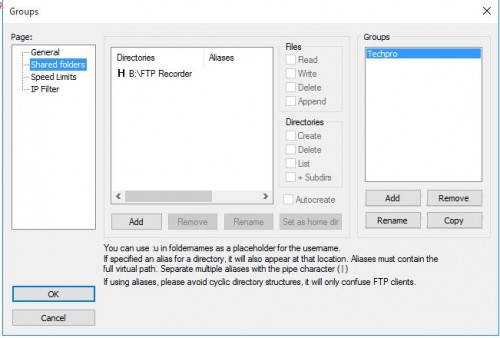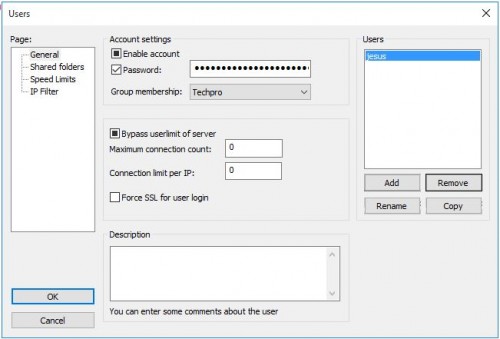Imagine a situation: your DVR or NVR has been stolen. It is in this situation where learning How to configure FTP to backup your Recorder is necessary.
You’ve gone in the right direction to protect your property by purchasing a CCTV camera system. Having security cameras visible is enough in most cases to deter criminals from trying to gain entry to your home or business, but what happens if criminals still decide to access your property? If your security cameras are positioned well the footage you need to identify him or her will likely be recorded so the authorities can hopefully make an arrest.
However, if the criminal sees the cameras system and is still daring enough to break in, he or she will likely look for the DVR or NVR recorder and to try and make sure no evidence is left behind.
But fear not, there is something you can do to retain that footage even if the DVR or NVR is stolen and that is to have the footage from your recorder backed up using the FTP feature.
How to backup your security recorder via FTP:
In order to use this feature, you first need an FTP server. A computer on the same network as the DVR or NVR that is always on will work perfectly. I recommend FileZilla which is a free FTP server software that works on Windows and can be downloaded at https://filezilla-project.org/. Once installed, you need to set up your FTP directory, rights to write data to the folder where the footage will be stored, groups and accounts.
Set up your FTP directory, rights:
Open Groups settings and Add a new Group. (NOTE: To Any user that belongs to a group, settings will be overridden by the groups settings.) Type any name for your group and click OK. Click on Shared folders and a folder path where the footage will store. From the Files and Directories option click on ALL the options available, including auto create. Click OK when done.
Next click on Shared folders and click Add. You can then browse to where you want the footage backed up to as shown below.
Click on the user’s icon to create a new user. Click Add to configure its settings such as password and group. Click Ok when done.
The FTP is now all set up. All you need to know from here is the IP address of the computer it is installed on. You can obtain this by going to your start menu > run, type “cmd” and enter to open a command prompt. In that window type “ipconfig” and hit enter. Your IP address will be displayed. Take that information down as we will need to enter it into the Recorder’s FTP configuration which we will review next.
Access your DVR’s or NVR’s web service by typing the IP address of the recorder into your Internet Explorer address bar. Then click the Setup tab and the storage category. Under that click on Storage and then the FTP tab. Click the checkbox to enable the FTP feature and enter your computer’s IP address in the Server IP field. By default, FileZilla uses port 21 so you can leave that field alone.
Enter the username and password for the user you created in FileZilla. Remote Directory can be left blank as you already choose the folder where you want the footage to be backed up to. Finally, you need to choose the channels you want to backup, what type of files (MD, Regular or Alarm) you want to backup and the weekdays. NOTE: If you want to backup only motion event to the FTP, then the Recorder’s schedule need to be configure as motion for it to work.
The period setting is for you to select the time period of the recorded files to be uploaded. In another words, If you want to only backup footage of your working hours, lets say from 9AM to 6PM, then you will need to configure the period assuredly. The second period is in case you would like another type of recording type, for example regular recording.
You now have everything set up that is needed to have an additional backup of your footage for more piece of mind. If the DVR or NVR is stolen, you will still have the footage you need to hopefully lead police to an arrest.
Now you might be wondering, “What if the computer is stolen too?”, or “What if I don’t have a computer at that location?”. Well, you can use the FTP feature to also back up footage offsite. Say for example you want to back up the footage from the DVR or NVR at your business to a computer you have at home. The setup is relatively the same, so follow all of the previous steps for installing FileZilla on your home computer, and the same steps for setting up the FTP feature on your DVR or NVR. The one difference will be for the Server IP setting in the DVR’s configuration. You want to set this to your home network’s external IP. You can see what that is by visiting http://canyouseeme.org from your home computer. Use the IP address given to you on that site for the Server IP field in the FTP options.
The setup is almost complete, but you need to open up the FTP port on your home network’s router so the DVR can find the server. Refer to your routers documentation on how to set up port forwarding. You will need to forward TCP port 21 to your computer’s IP address. Again, this can be found by running ipconfig from a command prompt. Once this is done, you can confirm your port forwarding settings are working by visiting http://canyouseeme.org and testing port 21. It should respond with a successful message if everything is set up properly. You are now set up, but keep in mind the backup process will need a lot of bandwidth. You will need sufficient upload speed from where the DVR is installed, and download speed on the network that has the FTP server. You can test your speeds at http://speedtest.net. If your speeds aren’t great, you can always be more selective in what you back up. You can just backup a certain camera, day of the week or time periods.
If you want access to your footage from anywhere, or don’t want to run your own FTP server, you can use a cloud-based storage solution. Any cloud storage solution will work fine that has FTP access. The account settings for your cloud storage service will provide you with the IP address, account and port needed to set up your recorder’s FTP backup feature.
You now have three different ways you can enable FTP backup of footage from your DVR or NVR. This will provide you with additional piece of mind, as your footage will still be available if the DVR is stolen or destroyed. You should still try to conceal the location of the DVR if possible, but if the criminal sees the cameras he will likely try hard to look for it. With the FTP backup feature of SecurityCameraKing’s DVRs and NVRs, you don’t have to be out of luck if it is found.


